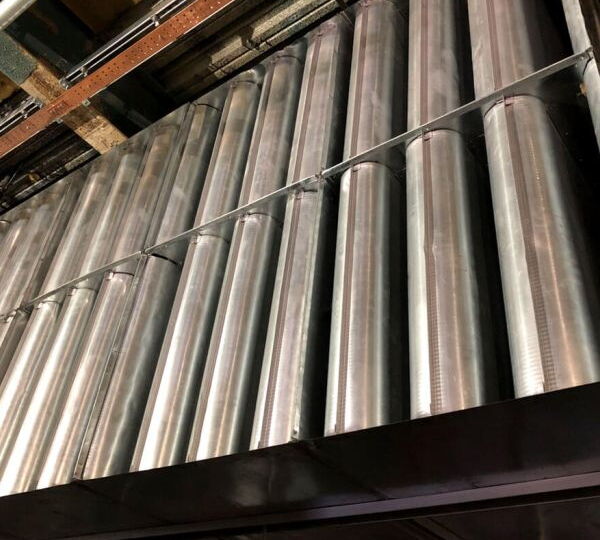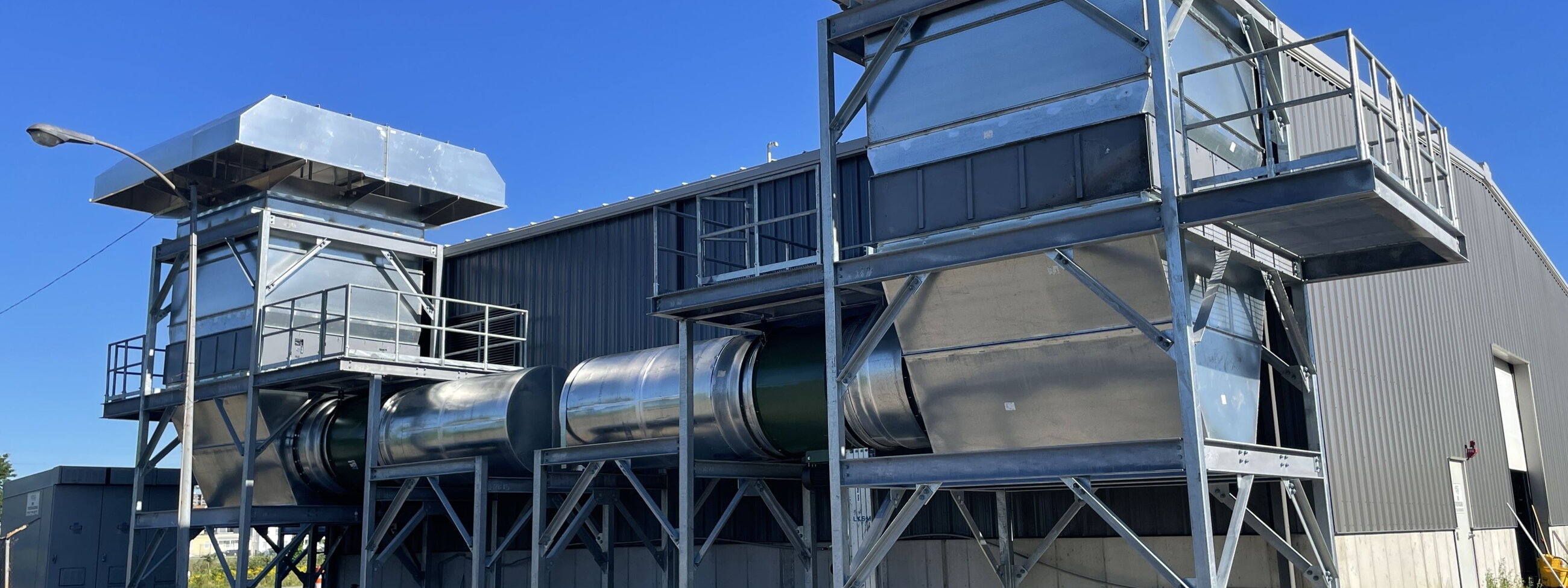HVAC Silencers | Customized Airflow Noise Control
HVAC acoustic silencers are devices installed within ductwork to reduce the noise created by fans, air movement, and mechanical vibrations. Noise can originate from turbulent airflow, fan blades, compressors, or mechanical vibrations being transmitted through the ducts. Without proper treatment, these sounds can travel long distances, creating distractions and discomfort throughout a building.
A standard HVAC acoustic silencer is constructed using a robust sheet metal outer casing that contains a series of internal baffles. These baffles are filled with sound-absorbing materials, typically fiberglass or mineral wool, designed to dissipate acoustic energy as air passes through. Some designs also include protective facing or perforated metal around the baffles to improve airflow and protect the absorber material.
The silencers are carefully engineered to attenuate sound across a wide frequency spectrum, particularly targeting the low-frequency rumble and high-frequency hiss common to air handling systems. Properly selected and installed, HVAC silencers can achieve noise reductions of 20 to 50 decibels or more, significantly improving indoor environmental quality.
Key Benefits of HVAC Acoustic Silencers
One of the most significant advantages of installing acoustic silencers is their ability to maintain HVAC system performance while dramatically reducing unwanted noise. Unlike makeshift solutions that may restrict airflow or create pressure losses, properly designed silencers preserve system efficiency and meet project design criteria for airflow volume and static pressure.
Silencers contribute to enhanced occupant comfort, promoting better concentration, communication, and well-being. In critical environments such as hospitals and research facilities, low background noise is essential to operational success. In educational and office settings, reduced HVAC noise directly supports productivity and learning outcomes.
Additionally, HVAC silencers help ensure compliance with building codes, acoustic design standards, and client specifications. Meeting NC (Noise Criterion) or RC (Room Criteria) ratings is often a requirement for new construction, renovation, and LEED-certified projects, and silencers are a key part of achieving these goals.
How HVAC Acoustic Silencers Are Sized
Choosing the right silencer is not a one-size-fits-all process. Sizing is based on the characteristics of the HVAC system, including fan size, airflow rate (measured in CFM), duct size, and required noise reduction goals. Silencers are selected to balance acoustic performance with minimal impact on airflow and system pressure.
Factors considered in silencer design include:
- Air velocity through the silencer
- Frequency range of noise to be attenuated
- Static pressure limitations
- Physical space available for installation

Frequently Asked Questions
A: An HVAC silencer functions by channeling air through a casing equipped with sound-absorbing internal baffles. These baffles are lined with acoustic materials that capture and dissipate noise energy. As air flows through the silencer, the sound waves are absorbed without causing significant pressure drop, allowing for quiet ventilation without sacrificing HVAC system performance.
A: The amount of noise reduction achieved by an HVAC silencer can vary based on its design, size, and application, but reductions of 20 to 50 decibels are typical. Higher-performance silencers with optimized baffle spacing and acoustic fill can achieve even greater attenuation across a broad frequency range, significantly enhancing the acoustic comfort of indoor environments.
A: When designed and sized correctly, an HVAC silencer minimally affects airflow. While any component in a duct system introduces some pressure drop, silencers are engineered to balance airflow needs with noise reduction goals. Choosing the proper dimensions, air velocity range, and baffle configuration ensures efficient system operation without compromising ventilation rates.
A: High-quality HVAC silencers are typically built with galvanized or stainless steel outer casings to provide strength and corrosion resistance. Inside, the baffles are filled with dense, non-combustible fiberglass or mineral wool to absorb sound. Perforated metal liners often cover the absorptive material, protecting it from erosion while allowing air to pass through efficiently.
A: Absolutely. DDS Acoustical Specialties offers both standard models and fully customized silencers to meet specific project needs. Customization options include variations in size, shape, material (such as stainless steel for cleanrooms), airflow capacity, and acoustic performance specifications. We can also design silencers to meet stringent requirements for healthcare, education, and industrial applications.
A: Silencers are strategically installed at points where noise sources are strongest or where sensitive spaces require protection. Common locations include the discharge side of fans, intake vents, duct branch take-offs, and upstream of conference rooms, offices, hospital wards, and auditoriums. Proper placement is key to achieving maximum noise reduction impact.
A: HVAC silencers are generally low-maintenance but should be included in regular HVAC system inspections. Periodic visual checks ensure that no debris is obstructing the silencer and that the internal baffles remain intact. In environments with high particulate levels, occasional cleaning of the perforated liners may be advisable to maintain optimal airflow and acoustic performance.

